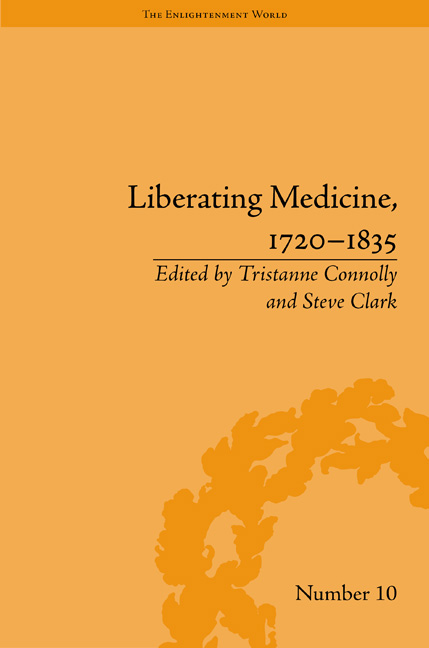Book contents
- Frontmatter
- CONTENTS
- Acknowledgements
- Contributors
- List of Figures
- Introduction
- I Spiritual Sickness and Hypochondria
- II Health and Emancipation
- III Madness
- IV Anatomized and Aestheticized Bodies
- 11 Authority and Imposture: William Godwin and the Animal Magnetists
- 12 George Stubbs's Dissection of the Horse and the Expressiveness of ‘Facsimiles’
- 13 In Submission: Frances Burney's Patient Narrative
- 14 The Surprising Success of Dr Armstrong: Love and Economy in the Eighteenth Century
- V Birth
- Notes
- Works Cited
- Index
12 - George Stubbs's Dissection of the Horse and the Expressiveness of ‘Facsimiles’
from IV - Anatomized and Aestheticized Bodies
- Frontmatter
- CONTENTS
- Acknowledgements
- Contributors
- List of Figures
- Introduction
- I Spiritual Sickness and Hypochondria
- II Health and Emancipation
- III Madness
- IV Anatomized and Aestheticized Bodies
- 11 Authority and Imposture: William Godwin and the Animal Magnetists
- 12 George Stubbs's Dissection of the Horse and the Expressiveness of ‘Facsimiles’
- 13 In Submission: Frances Burney's Patient Narrative
- 14 The Surprising Success of Dr Armstrong: Love and Economy in the Eighteenth Century
- V Birth
- Notes
- Works Cited
- Index
Summary
George Stubbs's work is a notable example of interdisciplinary endeavour ranging from anatomical dissection, scientific illustration and technological innovation to painting and the visual arts (portraiture, animal art and engraving). His atlas, The Anatomy of the Horse, is an intriguing work which exemplifies Stubbs's versatility and has rightly acquired an almost legendary status in the history of art, anatomical illustration and medical science. Such multiplicity, and the problems of historical and conceptual specificity that it brings with it, has posed strong challenges of interpretation to scholars from different disciplines, and of various intellectual traditions and languages. It has traditionally led historians to put Stubbs's work to the procrustean table of a kind of ‘scientific’ or ‘classical Enlightenment’, which is underpinned by obsolete notions of the Enlightenment as the ‘Age of Reason’ and ‘frigid intellectualism’. In art history, such interpretations of the Enlightenment continue to resonate in the rashness with which Stubbs's visual language is disproportionately seen to draw on neoclassical repertoires of abstraction, beauty and harmony, while the artist is hailed as ‘the greatest classical English painter of the age of Enlightenment’. The tendency to over-emphasize the qualities of quiet poise, static monumentality and order seems to dominate even those otherwise sophisticated accounts of Stubbs's art.
In this paper, I would like to explore a different plot, which is in better accord with more dynamic readings of the Enlightenment's high and late phases as well as with the density and lingering disquiet of Stubbs's own work. I will thus embed Stubbs's atlas into those radical traditions of the Enlightenment that, through the deployment of a range of vitalist and sublime themes, sought to disrupt ‘classical’ or ‘mechanical science’ and reanimate the experience of knowing and seeing. Through the study of the atlas's illustrations next to the long-neglected literary values of Stubbs's descriptive text, this paper will aim to counter routine identifications of this book with such anatomical projects of neoclassical Enlightenment as Albinus's atlas. Stubbs's amplified forms of imitation and empirical observation, as well as his rigorous models of exactitude and hyper-naturalism, functioned for contemporaries as energizing agents of expression.
- Type
- Chapter
- Information
- Liberating Medicine, 1720–1835 , pp. 165 - 180Publisher: Pickering & ChattoFirst published in: 2014



